Essential Guide to Visiting Rameshwaram
Sacred Island of Lord Rama
- Muthukrishnan
- 4 min read
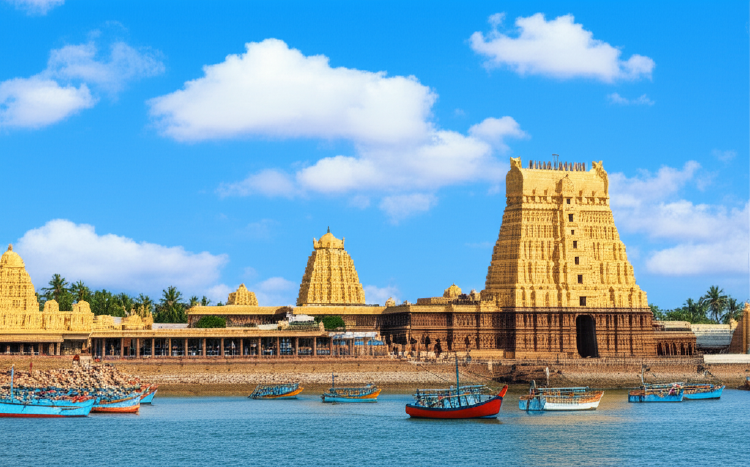
Rameshvaram is a sacred island located off the southeastern coast of Tamil Nadu, India. Its name literally means “Rama the god,” reflecting its profound religious significance in Hindu tradition. This island is considered one of the holiest pilgrimage destinations in India, holding immense spiritual importance for devotees.
Mythological Significance
According to the epic Ramayana, Lord Rama stopped at Rameshvaram to purify himself after defeating and killing the demon king Ravana. This act of purification was essential for Rama, as killing Ravana (who was a Brahmin by birth) required ritual cleansing.
The story goes that Rama sent Hanuman, the devoted monkey god, to Benares (modern-day Varanasi) to bring back a Shiva Lingam for worship. During Hanuman’s journey, Rama’s wife Sita created her own lingam from the island’s sand and began worshipping it. Upon Hanuman’s return with the lingam from Benares, Rama instructed him to replace the sand lingam with the one he had brought.
However, despite Hanuman’s tremendous strength, he could not dislodge the sand lingam created by Sita. Recognizing the divine significance of this miracle, both lingams were placed side by side for worship—a tradition that continues to this day.
Religious Importance
Rameshvaram holds a special place in Hinduism as one of the Char Dham (four divine abodes) that devout Hindus aspire to visit in their lifetime. The other three sites are:
- Badrinath in the north
- Puri in the east
- Dwaraka in the west
The island is particularly sacred to followers of Shaivism (devotees of Lord Shiva) and Vaishnavism (devotees of Lord Vishnu, of whom Rama is an incarnation).
The Temple and Its Architecture
The main temple on the island, the Ramanathaswamy Temple, is dedicated to Lord Shiva and is believed to have been originally established by Lord Rama himself. The temple’s architectural elements span from the 7th through the 13th centuries CE, representing various dynasties that contributed to its construction and expansion.
The temple is renowned for its magnificent corridors, which are among the longest in India, and its ornate pillars. One of its most distinctive features is its 22 sacred water tanks (theerthams), each believed to possess unique purifying properties. Pilgrims traditionally bathe in these tanks as part of their ritual visit.
Location & Transportation
- Location: Island in the Gulf of Mannar, Tamil Nadu, southeastern India
- Nearest Airport: Madurai Airport (163 km)
- Railway Access: Rameshwaram has its own railway station connected to major cities
- Road Access: Well-connected by road; buses available from major Tamil Nadu cities
- Local Transport: Auto rickshaws and taxis are available for getting around the island
Best Time to Visit
- October to April: Most pleasant weather with temperatures between 20°C-30°C
- Avoid May-September: Hot summer months and monsoon season
- Festival Season: Thai Amavasai (January/February) and Maha Shivaratri draw large crowds
Accommodation
- Various options ranging from budget guesthouses to mid-range hotels
- Book in advance during festival seasons and peak tourist months
- Most accommodations are concentrated near the temple area
Religious Customs & Etiquette
- Dress Code: Modest clothing required for temple visits (shoulders and knees covered)
- Temple Protocols: Remove footwear before entering temples
- Photography: Often restricted inside main temple sanctums
- Ritual Bathing: Bringing a change of clothes is advised if you plan to bathe in the sacred tanks
Must-Visit Sites
Ramanathaswamy Temple: The centerpiece of Rameshwaram pilgrimage
- Allow 2-3 hours for a complete visit
- Visit the 22 theerthams (sacred water tanks) for ritual bathing
- See both the Hanuman-brought and Sita-created lingams
Dhanushkodi: Ghost town 20 km from Rameshwaram
- Accessible by special vehicles only
- Last point of Indian land before Sri Lanka
- Site where Rama’s arrow allegedly destroyed the bridge to Lanka
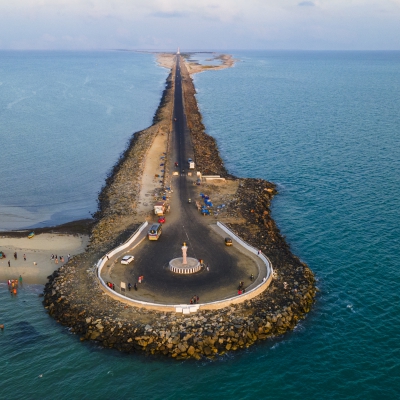
dhanushkodi
Gandhamadana Parvatham: Hill with temple housing Rama’s footprints
- Good panoramic views of the island
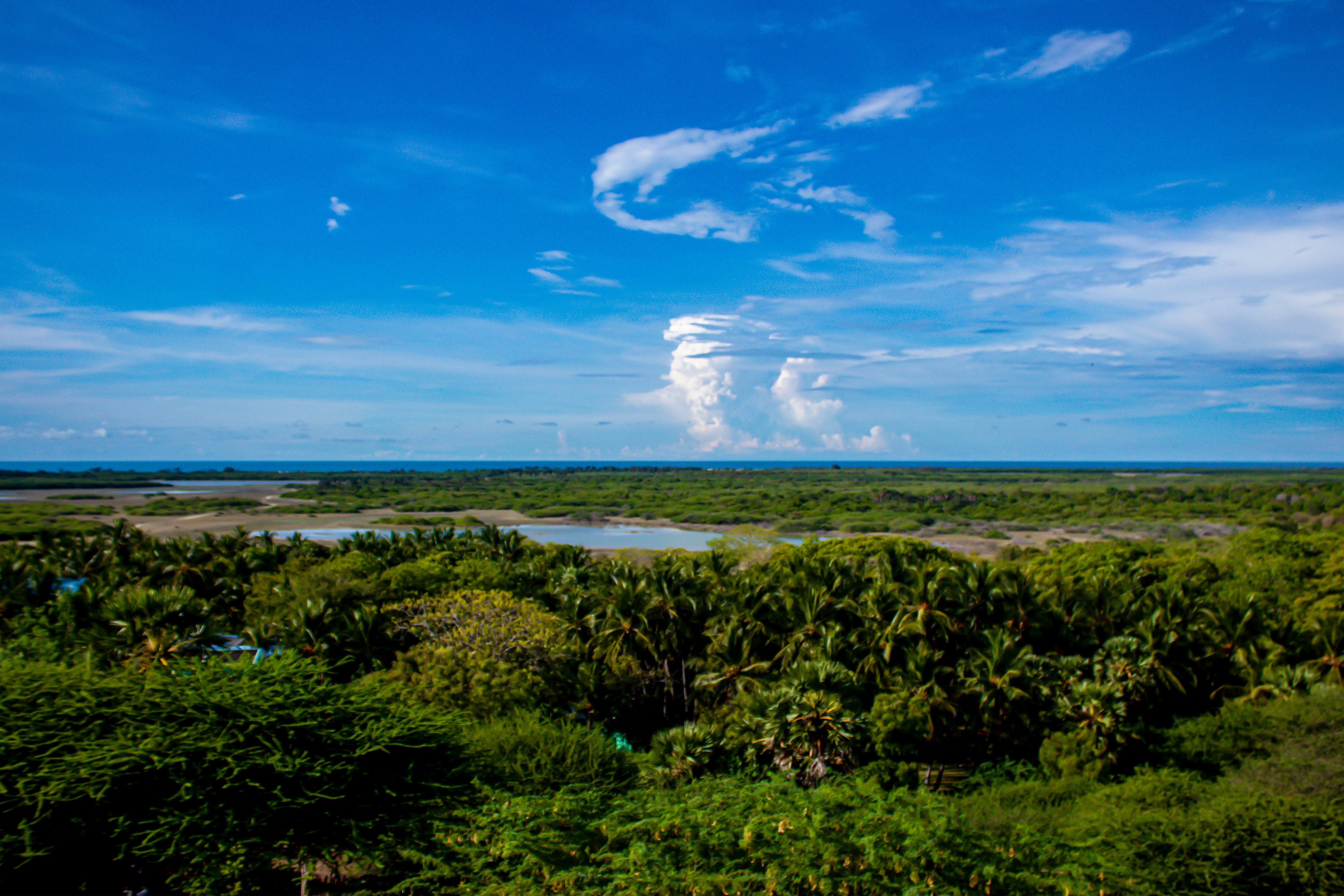
Gandhamadana Parvatham
Agni Theertham: Sacred beach where pilgrims take ritual sea baths
- Located near the Ramanathaswamy Temple
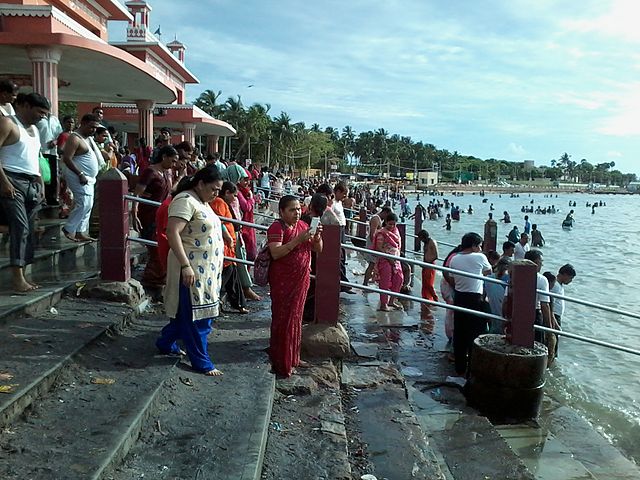
Agni Theertham
Pamban Bridge: Iconic railway bridge connecting mainland to Rameshwaram
- One of India’s engineering marvels
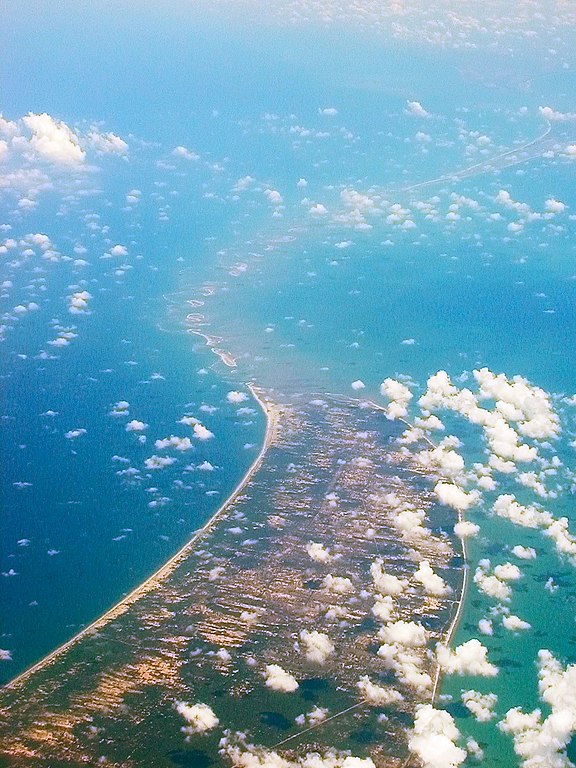
Ram Setu (Adam’s Bridge)
Pilgrimage Process
- Typically begins with a sea bath at Agni Theertham
- Followed by bathing in the 22 sacred tanks inside the temple
- Then worship at the main shrine of Lord Shiva
Practical Information
- Language: Tamil is the primary language; some English and Hindi spoken in tourist areas
- Currency: Indian Rupee (INR); ensure you have cash as card acceptance may be limited
- Food: Predominantly South Indian vegetarian cuisine
- Water: Drink only bottled or purified water
- Medical Facilities: Basic healthcare available; major medical needs should be addressed in Madurai
- Mobile Connectivity: Generally good throughout the island
- Duration: A complete pilgrimage visit typically requires 2-3 days
Cultural Tips
- Rameshwaram is primarily a pilgrimage site, not a beach resort destination
- Respect religious sentiments and maintain a quiet, respectful demeanor
- Many pilgrims combine Rameshwaram with visits to nearby pilgrimage sites in Tamil Nadu
- Consider hiring a local guide for deeper insights into the religious significance
Travel Documents
- Foreign visitors need a valid passport and appropriate Indian visa
- Indian nationals need some form of government-issued photo ID
This guide covers the essential information for planning your visit to this sacred island, ensuring both a spiritually fulfilling and logistically smooth experience.